Commercial Lighting: A Comprehensive Guide
Table of Contents
Are you looking to captivate potential customers by enhancing the allure of your commercial space? You’re not alone in this endeavor! You’ve landed in the perfect spot to find an optimal solution that highlights the beauty of your products and augments the overall customer experience, thereby bolstering your brand’s reputation.
When it comes to illuminating commercial environments, lighting fixtures must be not only bright but also durable, surpassing the capabilities of residential lighting. It is crucial to note that not all commercial spaces have identical lighting requisites. Some areas call for a warm glow, while others benefit from excellent illumination; similarly, the brightness or voltage needs can vary significantly. Factors such as ceiling height, IP rating, and beam angle also play a pivotal role in selecting the ideal commercial lighting setup.
Are you feeling overwhelmed by the intricacies of commercial lighting choices? Fret not! Through this detailed guide, I am here to guide you in pinpointing the perfect fixtures to illuminate your space. Regardless of the nature of your commercial venture, this guide is designed to be your beacon of assistance. Let’s delve deeper!
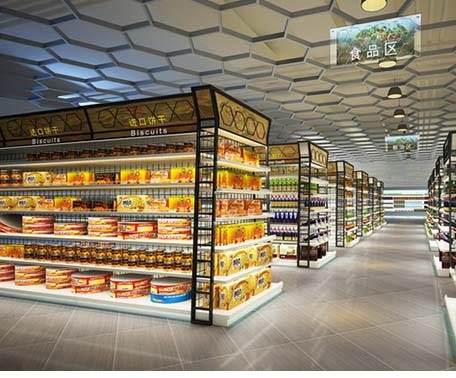
Understanding Commercial Lighting
Commercial lighting encompasses lighting solutions catering to businesses and retail spaces, including offices, eateries, shopping centers, hotels, and beyond. These fixtures are designed to withstand substantial daily wear and tear. For example, lighting at gas stations and auto repair facilities routinely face exposure to dust, chemicals, oils, and potential physical impacts. To safeguard against these unpredictable conditions, commercial lighting products boast heightened resistance and longevity.
While incandescent or fluorescent fixtures were the go-to choices for commercial setups in the past, the tide has shifted considerably in favor of LED lights, propelled by technological advancements. This shift is grounded in the numerous benefits that LED lights bring to the table.
Cost efficiency is significant, mainly because commercial lights operate for extended durations. Many business proprietors are gravitating towards LED fixtures to curb escalating electricity bills. This choice melds energy efficiency with a myriad of advanced features, all aimed at enhancing the aesthetics and ambiance of your commercial space.
Categories of Commercial Lighting Solutions

Various kinds of lighting options are accessible for commercial settings. After a careful study of these variants, I have classified commercial lighting into three principal categories, enumerated below:
Incandescent Lighting
Incandescent lamps, also known as halogen lights, represent the oldest lighting solutions, characterized by a gas-filled bulb and a glowing filament that emits a warm glow. Despite their initial popularity in commercial lighting, these bulbs are now scarcely utilized due to increasing environmental concerns and high energy consumption, escalating maintenance expenses. Consequently, many nations have prohibited using these bulbs to mitigate their adverse environmental impact.
Fluorescent Lighting
As a more energy-efficient alternative to incandescent bulbs, fluorescent lights are prevalent in workplaces, educational institutions, and garages, as well as finding applications in older factories and mills. However, they pose an environmental threat due to the emission of mercury vapor, leading to bans in several countries, though they remain in use in specific commercial sectors in the US.
LED Lighting
LED, or ‘Light Emitting Diodes,’ offers a considerably more energy-efficient solution when compared to fluorescent lighting, consuming up to 85% less energy while providing advanced functionalities. These lighting options have gained prominence in various commercial spaces, offering many designs. Here’s an insight into some of the popular choices in LED lighting:
- Floodlights: Predominantly found in commercial spaces such as hotels, eateries, resorts, shopping complexes, and museums, floodlights accentuate building facades or highlight particular features, adding depth and texture to structures.
- Uplights & Downlights: Classified based on the direction of the light beam, these fixtures offer versatility in lighting applications, with uplights being used predominantly for accent lighting, while downlights serve general lighting purposes.
- Spotlights: A ubiquitous choice across various commercial sectors, spotlights excel in focussed illumination, effectively highlighting specific objects or areas.
- Path Lights: Ensuring safe and visible pathways during nighttime is vital, and LED bollard lights excel in this regard, finding applications in driveways, walkways, and other commercial premises to prevent accidents and enhance safety.
- Tube Lights: Offering a sleek and efficient replacement to traditional fluorescent lights, these tubular fixtures are widely employed in educational institutions, shopping centers, factories, and more, blending seamlessly with various commercial environments.
- LED Strips: Gaining popularity in residential and commercial settings, LED strips offer flexibility and ease of installation, providing customizable lighting outputs for creating the desired ambiance in commercial spaces.
- LED Neon Flex Lights: Transform the façade of shops, cafes, hotels, and shopping centers with the vibrant allure of LED neon flex lighting. A perfect modern alternative to classic glass neon illuminations, these lights are pivotal in elevating your brand’s visibility and prestige.
- In-built Lighting Solutions: Integrated directly into the structure, recessed lights offer a streamlined and modern lighting option, primarily found adorning the ceilings of establishments such as hotels, corporate offices, event spaces, and shopping centers. Often referred to as pot lights, they are famous for illuminating stairways in commercial settings. Opting for fixtures with an appropriate IC rating is crucial to ensure safety and efficiency, particularly in insulated ceilings.
- Aesthetic Illumination: Elevate the visual appeal of any commercial space with a range of decorative lighting options, including chandeliers, lanterns, and pendant lights, predominantly featuring LED technology. These stylistic light fixtures augment the ambiance and foster increased visitor engagement.
- Durable Lighting Solutions: In industrial environments such as factories and manufacturing units, selecting resilient light fixtures is imperative. Tri-proof lights stand as the epitome of durability, offering resistance to water, dust, and corrosion, making them suitable for areas prone to chemical exposure or high moisture levels. Remarkably, these fixtures also boast explosion-resistant properties. For further insights, visit – What is Tri-Proof Light and How to Choose?
- Emergency Illumination: Imagine encountering a sudden power outage accompanied by fire alarms in your office or other commercial premises. Navigating through darkness can be challenging, if not dangerous. This is where emergency lights come into play, illuminating instantly during power disruptions to facilitate safe and swift evacuation.
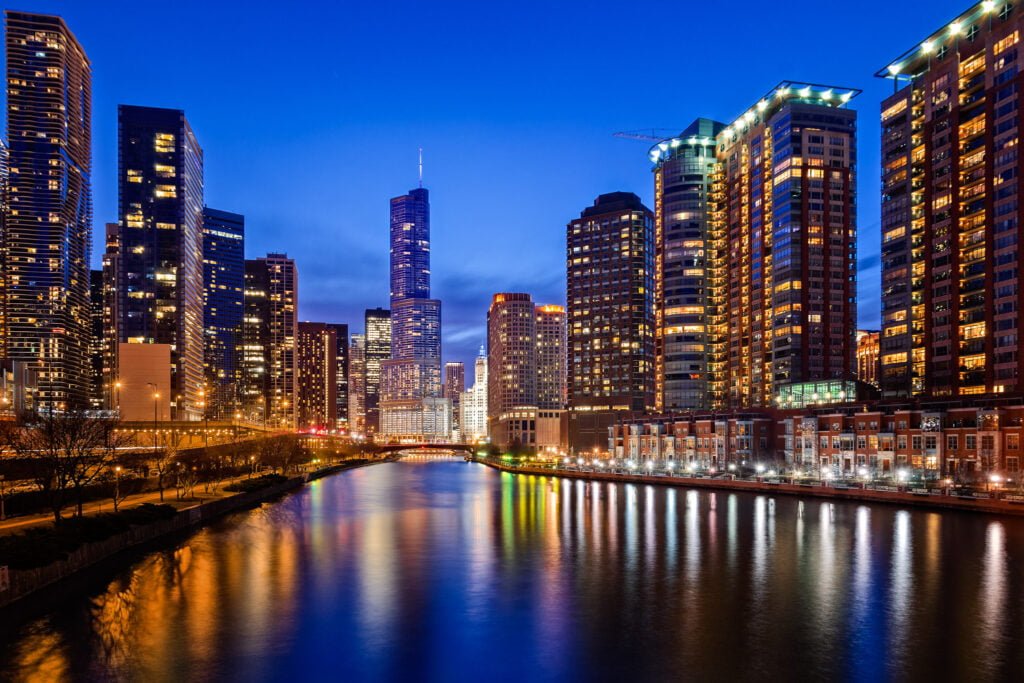
Utilizing Commercial Lighting Solutions
Commercial lighting solutions grace various business sectors, enhancing functionality and aesthetics. Here are some prevalent applications of these lighting systems, along with resources to guide you in selecting the perfect lighting options:
- Offices: In office environments, the lighting choices focus on fostering employee comfort. Spaces such as workstations, conference rooms, and general office areas benefit from carefully chosen commercial lights.
- Hotels & Restaurants: Lighting in hotels and restaurants transcends mere visibility and elevates the ambiance, potentially bolstering patronage. From ambient to decorative lighting, the illumination choices are integral to their branding and promotional strategies.
- Shopping Malls & Retail Stores: Retail spaces leverage commercial lighting to accentuate their products effectively. Popular lighting options in this sector include spotlights, LED strips, and track lights.
- Theatres & Museums: To spotlight shows and exhibits, theatres and museums employ commercial-grade lighting solutions. These establishments frequently use angular spotlights and track lights to focus on specific areas.
- Garages: In professional garages and parking areas, lighting fixtures endure various challenges, including water splashes and potential impacts. Therefore, commercial lighting with high IP and IK ratings proves ideal.
- Gyms & Yoga Studios: Lighting in health and fitness centers should cultivate a comfortable and conducive environment for clients.
- Barber Shops, Salons & Spas: Different sections within barbershops, salons, and spas have varying lighting needs based on the services provided. It’s essential to consider factors such as light color temperature and the CRI rating of the fixtures.
- Gas Stations & Auto-Repair Shops: These areas necessitate high-resistant lighting fixtures to withstand adverse conditions, including moisture, high temperatures, and chemicals. Tri-proof lighting fixtures with enhanced safety features are typically the choice here.
- Outdoor Lighting: In addition to illuminating interiors, commercial lighting solutions are also extensively used in outdoor areas of malls, eateries, halls, and theatres, with popular options being flood lights and LED neon signs.
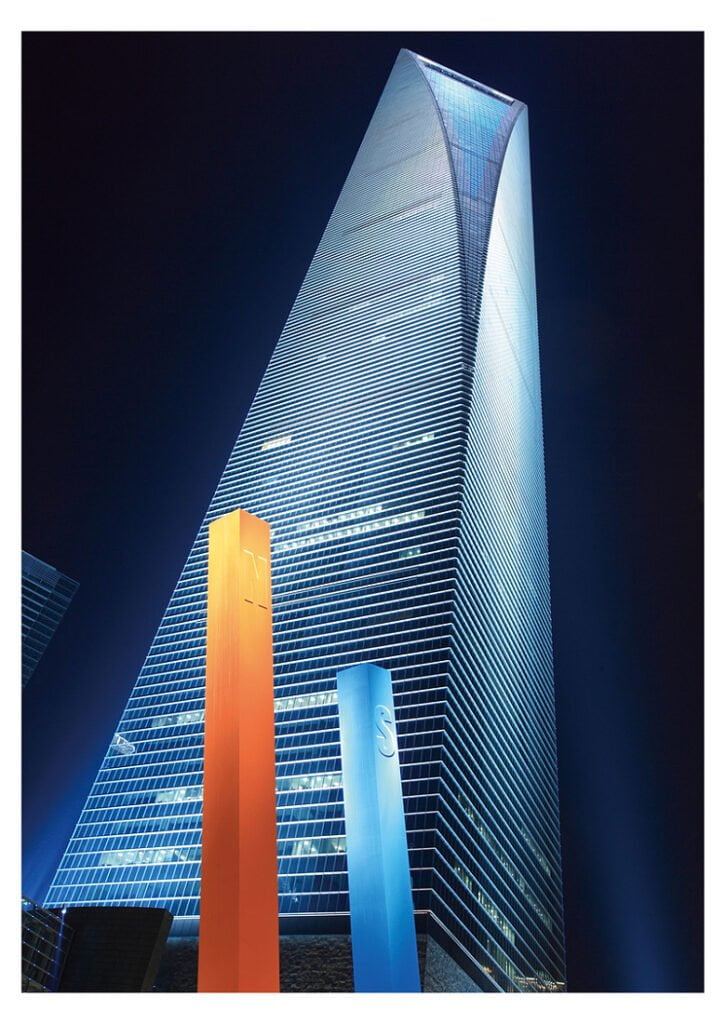
Benefits of Strategic Commercial Lighting
Utilizing high-quality commercial lighting can significantly benefit your enterprise, offering numerous advantages such as:
1. Improved Visibility and Safety:
Commercial premises are frequented by diverse individuals, including employees, clients, and visitors. Ensuring well-lit surroundings is essential for their safety, particularly during the evening. A well-illuminated environment encompassing parking areas, walkways, and entry points fosters a sense of security for everyone. Furthermore, maintaining a consistent ambiance throughout the day necessitates continuously operating lights in commercial spaces.
2. Boosted Productivity:
The type of lighting installed in work areas profoundly influences employee productivity. For example, integrating excellent white lighting solutions in office spaces can invigorate employees, fostering a more dynamic and productive work environment, which translates to positive results for your business.
3. Gaining a Competitive Edge:
Practical and aesthetically pleasing commercial lighting can catapult your business ahead of competitors. A well-lit facility not only attracts customers but also enhances the reputation and perception of your company, providing a considerable competitive edge.
4. Brand Identity Enhancement:
It might surprise you that thoughtful lighting design can be a powerful tool in establishing your brand identity. For example, utilizing luminous signage or neon lights can magnify your brand’s visibility from afar. Additionally, coordinating lighting hues with brand logos or employing them in greeting cards and price tags can reinforce your brand imagery. Tailored lighting solutions offer further opportunities for brand promotion and recognition.
5. Welcoming Ambiance and Effortless Customer Navigation:
Implementing superior exterior lighting encourages customers to patronize your outlet or restaurant. Incorporating elements like a glass facade can offer a glimpse of the interior lighting, piquing the interest of potential customers. Strategically placed light fixtures can capture customer interest, prompting them to explore your offerings further, which aids in business expansion.
6. Integration of Intelligent Lighting Solutions:
The adoption of intelligent lighting systems is on the rise, offering innovative options like motion-activated lights for entrances and stairwells of commercial establishments. These modern solutions enhance user experience and elevate your brand’s value, portraying an image of innovation and modernity.
Challenges Posed by Commercial Lighting Systems
While advantageous, commercial lighting systems present several significant challenges that warrant careful consideration. The notable challenges include:
1. Elevated Power Usage:
A prominent downside of commercial lighting is its significant electricity consumption, especially with varieties such as incandescent and fluorescent bulbs. Due to the continuous lighting needs of commercial spaces, energy bills can skyrocket. To mitigate this, considering energy-efficient alternatives such as LED lights can be beneficial as they considerably reduce overall energy expenditure.
2. Incremental Maintenance and Replacement Expenses:
Commercial lighting fixtures are often exposed to harsh conditions, including dust, water, chemical interactions, and physical impacts. These factors necessitate vigilant maintenance to ensure longevity. Investing in high-quality fixtures with superior IP and IK ratings can potentially lessen the frequency of maintenance and replacement, thereby reducing costs in the long run.
3. Shortened Lifespan:
Unfortunately, many commercial lighting options have a limited lifespan, necessitating more frequent replacements and increasing ongoing costs. Their lack of energy efficiency compounds this issue. Transitioning to LED lighting systems can alleviate these concerns, offering a more durable and efficient lighting solution. Here is a comparative analysis of the lifespans of incandescent, fluorescent, and LED lights-
4. Restrained Flexibility:
A significant drawback of commercial lighting is the limited flexibility it offers. Most of these lighting systems are installed as permanent fixtures in areas that do not allow easy modifications. Furthermore, functionalities like dimming or color changing are relatively scarce in commercial lighting setups.
5. Excessive Heat Emission:
Traditional choices for commercial lighting, such as incandescent or halogen bulbs, emit considerable heat. This can create discomfort for customers and staff, particularly in confined spaces with inadequate ventilation. This issue can also strain air conditioning systems, escalating energy costs further.
6. Substantial Initial Investment:
Installing commercial lighting systems demands a hefty initial investment, owing to their robust structure and heightened resistance levels, making them more expensive than their residential counterparts. Additionally, installation expenses can be steep, necessitating expert electricians to wire the space accurately, escalating the initial financial outlay.
7. Adverse Environmental Effects:
Traditional commercial lighting systems hurt the environment, generating greenhouse gases and contributing to global warming. Furthermore, incandescent and fluorescent bulbs emit toxic gases that harm the atmosphere. On a positive note, shifting to LED lighting can counteract these negatives, offering a more environmentally friendly alternative.
By being aware of these challenges, one can make informed decisions when selecting and installing commercial lighting systems, ensuring a balance between efficiency, cost-effectiveness, and environmental responsibility.
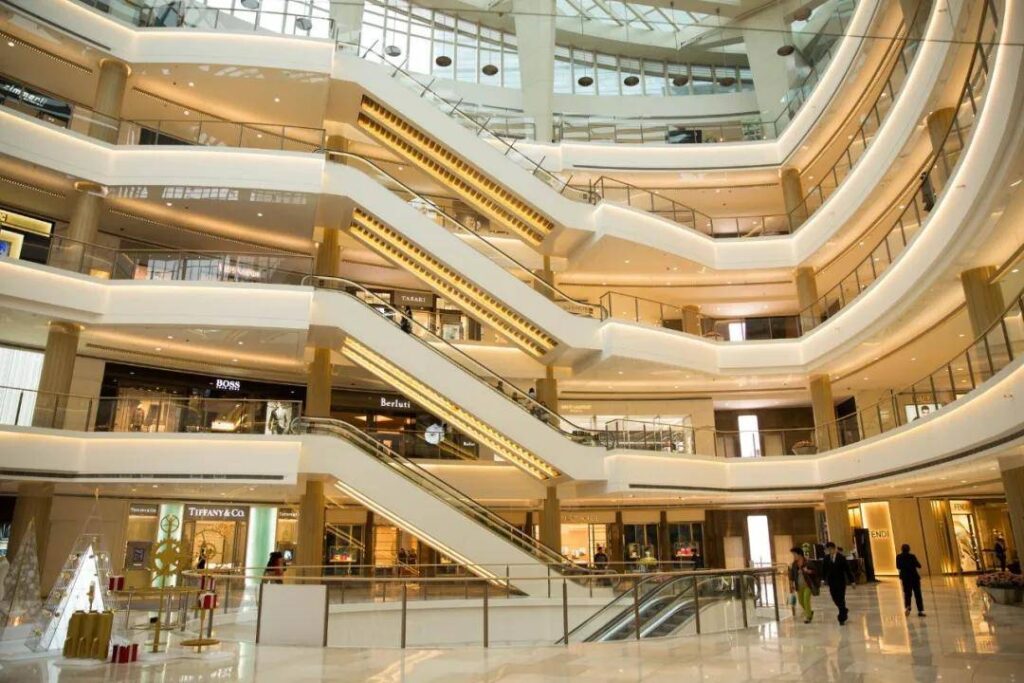
Critical Considerations for Commercial Lighting
Selecting the right lighting fixtures for your commercial spaces is crucial. Here are some essential aspects to keep in mind:
1. Ceiling Height
The height of your ceiling significantly impacts your lighting choices. For tall ceilings, opt for suspended or hanging fixtures. Ceiling-mounted lights might not serve you best in such scenarios. Consider options like pendant lights, hanging bulbs, or suspended LED lights.
For those keen on DIY solutions, aluminum channels are a good choice. Insert LED strips into them, suspend them, and observe the result. This method not only ensures adequate visibility but also enhances the aesthetic appeal of your space. Traditional choices such as recessed lights, cove lighting with LED strips, or standard tube lights suffice for average ceiling heights.
2. Ceiling Material and Insulation
The composition and type of your ceiling may necessitate specific lighting treatments. For example, concrete ceilings might benefit from suspended LED panel designs or surface-mounted LED panels. The insulation of the ceiling is a pivotal consideration when opting for recessed lights. Ensure you use IC-rated fixtures for insulated ceilings, as non-IC-rated ones pose a fire hazard.
3. Intended Use of Lighting
The appropriate light fixture largely depends on its intended application. What works for a restaurant might not be suitable for a warehouse. Hence, always factor in the purpose of lighting when selecting fixtures.
4. Beam Angle
The beam angle of a light source dictates the focus of the light. A smaller beam angle concentrates light on a specific spot. As the beam angle increases, so does the diameter of the light spread. Moreover, the distance between the light source and the floor influences the spread of light. Consult the provided chart to understand the relationship between beam angles and light output.
Essential Brightness Factors
Determining the optimal brightness for your commercial lighting requires careful consideration. The choice in brightness hinges on several factors, including the number of fixtures, their size, and arrangement. You might opt for higher-lumen bulbs or a more significant number of medium-lumen fixtures to achieve the desired luminosity. Keep in mind that adding more fixtures can offer comparable illumination to that of a high-power bulb. Selecting the perfect brightness level can sometimes be perplexing. Consider the following elements to make an informed decision for your commercial space:
- Space Dimensions
- Access to Natural Light
- Lighting Objective (e.g., accent lighting demands more excellent brightness than ambient lighting)
- Preferred Light Spacing
- Energy Usage
Environment Specific Lighting
Commercial lighting solutions cater to indoor and outdoor settings with distinct requirements. Generally, outdoor areas necessitate brighter lighting compared to indoor spaces. Moreover, specific fixtures are crafted exclusively for outdoor environments. Tri-proof lights are an excellent choice in scenarios involving harsh conditions or potential hazards. Consider options like waterproof, rust-proof, vapor-proof, and explosion-proof lighting solutions to ensure safety and durability. Prioritize evaluating the commercial area’s conditions before selecting appropriate lighting fixtures.
Ensuring Fixture Longevity
Selecting durable fixtures is vital in commercial lighting to prevent frequent replacements, which could be troublesome and costly. For instance, billboard lighting in extensive commercial premises involves significant expenses. Opting for non-durable fixtures necessitating frequent replacements could result in substantial losses. Wondering how to gauge a fixture’s durability? Consider the following aspects when choosing a long-lasting lighting solution for your commercial venture:
- Fixture Longevity
- Construction Materials
- Accredited Certifications
- Brand Reputation
- Alignment with Intended Usage
- Efficient Heat Dispersion System
Efficient Lighting Practices
Operating for extended hours, emergency services like gas stations, pharmacies, and other vital commercial sectors necessitate constant lighting, often leading to hefty electricity bills. To mitigate these expenses, opting for energy-efficient lighting solutions is wise. In this regard, LED lights are unparalleled, consuming merely 6-8 watts to deliver the same brightness as 60-watt incandescent bulbs. Thus, making the switch to LEDs not only lowers costs but also is a step towards greener operations.
Understanding CRI Ratings
CRI, or ‘Color Rendering Index, ‘ quantifies a light source’s accuracy in depicting objects’ true colors, akin to natural light. This aspect is particularly critical when selecting lighting for jewelry stores, barber shops, and eateries. Lighting with low CRI ratings can alter the perceived color of items — a vibrant red garment might appear pinkish, for instance. Hence, aim for fixtures with high CRI ratings, typically above 90, to ensure optimum color fidelity. A rating of 100 represents the pinnacle of color accuracy, portraying objects in their genuine hues.
Evaluating IP and IK Ratings
The durability and resilience of lighting fixtures are gauged through IP (‘Ingress Protection’) and IK (‘Impact Protection’) ratings. The IP rating denotes protection against external elements such as dust and water, making it vital for outdoor installations with varying weather conditions. To choose the correct IP rating for your setup, refer to the comprehensive guide on IP Ratings.
On the other hand, the IK rating assesses a fixture’s ability to withstand impacts and collisions, a common occurrence in bustling commercial areas. Ratings range from 00 to 10, with higher values indicating superior resistance to physical damages. To aid in selecting the appropriate IK rating for your fixtures, consult the detailed guide on IK Ratings.
Selecting the Appropriate Color Temperature
The choice of color temperature significantly influences the ambiance of a space and can even affect individuals’ psychological state. Generally, white lights are categorized as warm, cool, or neutral tones, each providing a distinct lighting experience. With their yellowish hues, warm lights evoke a cozy atmosphere, making them suitable for hospitality settings like hotels and spas. Conversely, cool lights emit a blueish tone, promoting alertness and concentration, ideal for workspaces. Neutral lights, resembling daylight, provide a balanced, natural illumination. Here are some recommendations tailored to various business types to help you choose the perfect color temperature for your commercial venture.
| Commercial Area | Preferred Light Tone | Recommended Color Temperature In Kelvin |
| Office | Cool Tone | 3500K-5000K |
| Restaurant | Warm Tone | 2700K-3000K |
| Shopping Malls | Warm/Cool Tone | 3000K-5000K |
| Garage/Parking Lot | Cool Tone | 4000K-5000K |
| Warehouse | Cool Tone | 4000K-6500K |
Enhanced Functionality
Lights equipped with enhanced functionalities add a layer of flexibility and elevate the user experience significantly. You have the option to modify the mood of your area effortlessly through these functionalities. Imagine the awe on your patrons’ faces as they encounter motion-sensor lights on your restaurant’s staircase — a powerful tool to captivate potential customers and encourage them to avail of your services. Moreover, opting for addressable/digital color-changing lighting systems is a splendid choice for discos, concerts, and parties. These systems can synchronize with music, creating an immersive atmosphere that allows guests to feel the rhythm. Here are several features to think about incorporating into your commercial lighting setup:
- Dimming options
- Motion detection
- Daylight utilization
- Hue adjustments
- Occupancy detection
- Remote manipulation
- Scheduled timing
- Compatibility with smart home systems
- Emergency power reserves
- Alterable beam orientations
Upkeep
When selecting commercial lighting, upkeep is a pivotal aspect to consider. While residential lighting solutions are typically simple to maintain, the scenario changes significantly for commercial spaces. Maintaining them tends to be challenging, given the expansive area and the plethora of fixtures involved. Hence, it’s prudent to opt for fixtures that necessitate minimal maintenance, with LED strip lights being an optimal choice.
Guarantee
The guarantee associated with lighting fixtures can serve as a mirror reflecting their quality. Therefore, thoroughly scrutinizing the warranty provisions thoroughly before investing in lighting for your commercial establishment is essential. Generally, such lighting systems come with three to five years of warranty. However, there are several other critical aspects to mull over. Ensure you purchase from a reputable source to avoid counterfeits, as they don’t offer compensation or complimentary services. Also, remember to store the warranty card or memorandum securely to avail yourself of the warranty benefits seamlessly.
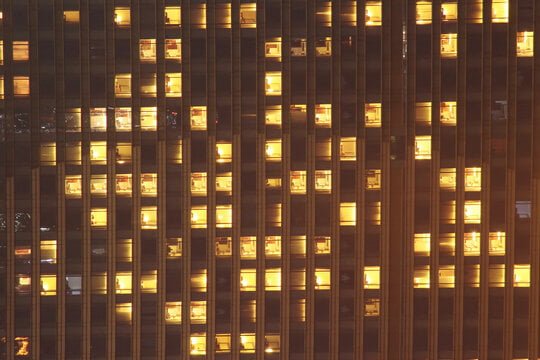
Guidelines for Commercial Lighting Health and Safety
In the US, commercial lighting installations need to adhere to specific guidelines prioritizing electrical safety, workplace wellness, energy savings, and the well-being of the inhabitants. These guidelines encompass the following vital codes:
International Energy Conservation Code (IECC): This comprehensive code delineates various energy-saving measures applicable to residential and commercial buildings. It advocates for adopting innovative energy-efficient standards spanning various elements, such as lighting, heating, and ventilation systems. As per the IECC, there are mandates to moderate outdoor lighting based on occupancy schedules, stipulating a reduction of at least 50% in light power intensity during non-operational hours.
National Electrical Code (NEC): The NEC, specifically in Article 410, delineates standards for diverse lighting applications, encompassing specifications for lamp holders, lamps, and decorative lighting accessories. This code outlines the requisite standards for unit loads across varied commercial lighting scenarios, ensuring installation safety and efficiency.
| General Lighting Areas (Commercial) | Unit Load (Volt-amperes/m2) |
| Warehouses | 3 |
| Garage/Halls, Corridors, Closets, Stairways | 6 |
| Armories and auditoriums | 11 |
| Hospital/Hotel/Motel/Restaurant/Courtrooms/Clubs | 22 |
| Barber Shops/Beauty Parlors/School/Stores | 33 |
| Office Buildings/Banks | 39b |
The American Society of Heating, Refrigerating, and Air-Conditioning Engineers (ASHRAE): Renowned for establishing benchmarks in the industry, ASHRAE presents the ASHRAE/IES 90.1 standard, encompassing guidelines for the creation of energy-efficient lighting designs. These standards address various facets, including power and density constraints, control mechanisms, the integration of daylighting, and quality parameters. By adhering to these guidelines, commercial buildings can foster energy conservation while enhancing the comfort of their occupants.
The Occupational Safety and Health Administration (OSHA): OSHA stipulates fundamental lighting requirements to ensure safe and sufficient illumination in commercial environments. Adherence to these regulations is essential to maintaining a safe and adequately lit workspace. The directives are detailed below-
| Commercial Lighting Zones | Light Intensity |
| First-aid facilities, offices, and hospitals | 30 foot-candles |
| Businesses and general construction sites | Ten foot-candles |
| General construction area | Five foot-candles |
| Warehousing areas, pathways, corridors, exits, and other indoor spaces | Five foot-candles |
| Common underground work locations, such as shafts and tunnels | Five foot-candles |
| Excavation sites, garbage disposal locations, loading docks, active storage spaces, field maintenance areas, and areas for fueling | Three foot-candles |
Understanding Commercial Lighting and Industrial Lighting: A Comparison
It can be easy to muddle the terms “commercial” and “industrial” when discussing lighting solutions. However, lighting needs vary significantly between commercial and industrial spaces. Explore the following comparison chart to gain a deeper understanding of the distinctions between the two:
| Criteria | Commercial Lighting | Industrial Lighting |
| Definition | Commercial lighting is used in spaces where business and retail activities occur. | Industrial lighting is designed for spaces where manufacturing, production, storage, and other industrial activities occur. |
| Purpose | It aims to create an inviting and pleasing environment for customers, clients, and employees. | It prioritizes safety, productivity, and efficient operations of industrial zones. |
| Application | Commercial lighting is commonly found in offices, retail stores, hotels, restaurants, shopping malls, and other spaces. | Industrial lighting is commonly used in warehouses, factories, production plants, workshops, logistics centers, and other industrial facilities. |
| Type Of Light Fixtures | Includes recessed lights, track lights, pendant lights, chandeliers, decorative wall sconces, and task lighting fixtures. | Includes high-bay lights, low-bay lights, strip lights, floodlights, area lights, etc. |
| Light Quality | Balances between functionality and visual appealProviding appropriate levels of brightness and color renderingEnhancing the beauty of the space | It achieves uniform lighting minimizing, providing optimal visibility for tasks and safety. |
| Brightness | As commercial lighting aims to create a comfortable and relaxed atmosphere, they have lower brightness levels than industrial ones. | Industrial lighting typically requires higher brightness to ensure optimal visibility for tasks, machinery operation, and worker safety. |
| Safety Level | Regular safety ratings like high IP and IK ratings are enough for outdoor lighting. However, in some cases, waterproof, rust-proof, and explosion-proof fixtures are used. | As industrial lighting faces adverse areas with continuous impact, chemicals, and other hazardous conditions, they have a higher safety level than commercial lighting. |
Enhancing Productivity Through Strategic Commercial Lighting: A Guide
In the preceding sections, we explored the nuances of selecting the ideal lighting solutions for your commercial establishment. Now, allow me to share some valuable insights to harness the potential of your commercial lighting further to boost productivity:
- Leverage Natural Light: When it comes to spaces such as restaurants, schools, and offices, giving preference to natural light can be a game-changer. It fosters a serene environment and significantly cuts down on daily electricity expenses.
- Institute Effective Task Lighting: Essential areas such as workstations necessitate sufficient luminosity. Whether it is the kitchen area of your restaurant, an office desk, or an automotive repair space, keenly assess the dimensions of the task area and the lighting required. Select fixtures that meet these needs precisely, as optimal task lighting can mitigate eye fatigue, enhancing overall work efficiency.
- Streamline Lighting Intensity: While sufficient illumination is pivotal for heightened productivity, maintaining balanced lighting levels is equally vital. Opt for energy-saving lighting alternatives that offer superior luminous efficacy with lower energy intake. Additionally, adhere to global standards for commercial space illumination, utilizing dimmers to moderate light intensity during nighttime, thereby conserving energy.
- Select Appropriate Color Temperature: The color temperature of your lighting solutions can dramatically influence the atmosphere within your commercial premises. The lighting requirements can vary, contingent upon the nature of your offerings or merchandise. For instance, when lighting a jewelry store, consider the product specifics — gold jewelry shines best under warm light, while diamonds sparkle under excellent lighting—endeavor to research and select a color temperature that complements your space perfectly.
- Mitigate Glare and Flickering: Avoid installing lights that flicker or produce harsh glare, as they can tarnish the image of your business. Not only can it deter customers, but it can also hamper the performance of your staff, potentially leading to eye strain and headaches. Be proactive in addressing these concerns; reference this guide for troubleshooting common issues: “25 Common Problems with LED Lighting“.
- Integrate Circadian Lighting: Incorporating circadian lighting systems can notably amplify employees’ productivity in your establishment. These lighting systems replicate natural light cycles, fostering wellness and a healthful work atmosphere, positively influencing mood, vigor, and overall performance.
- Offer Flexible Lighting Controls: Ensure that lighting control options are tailored to individual sections, enabling a superior work environment for employees. These controls could encompass dimming capabilities, beam angle modification, and color temperature alterations.
- Prioritize Regular Lighting Maintenance: Regular maintenance is vital to prolonging the lifespan of your lighting setup. Though commercial lighting setups are generally low-maintenance, adhering to the following protocols can be beneficial:
- Conduct regular cleaning to eliminate the accumulation of dust and dirt.
- Promptly replace malfunctioning bulbs or impaired lighting fixtures.
- Undertake frequent inspections to pinpoint and address lighting glitches.
- Maintain optimal wiring and connections to guarantee steady lighting performance.
- Stock up on spare bulbs and parts for swift replacements.
- Arrange for regular evaluations by proficient technicians.
- Educate staff on rudimentary maintenance procedures for timely resolution of minor issues.
- Keep abreast of the latest developments in lighting technology for potential enhancements or updates.
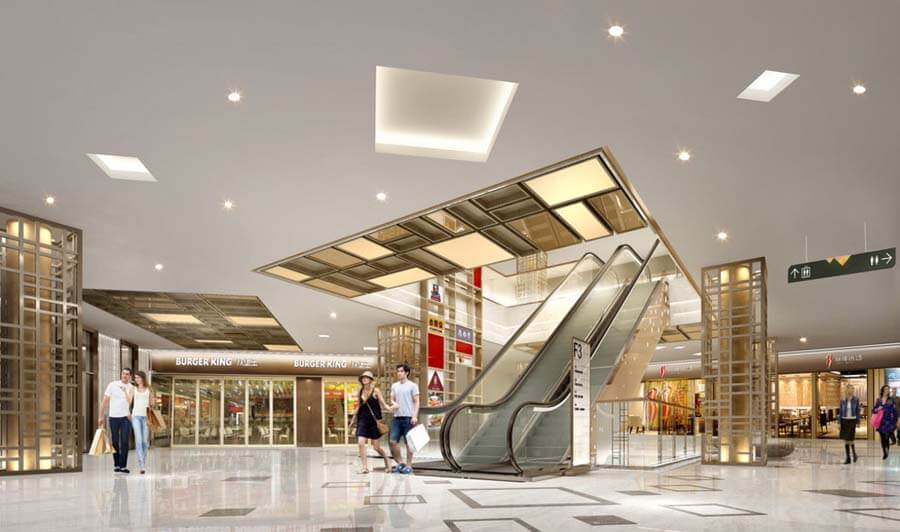
New Horizons in Commercial Lighting Technologies
The commercial lighting landscape continually evolves, spearheading unparalleled innovations at every juncture. The forthcoming developments in this sector promise to revolutionize how we perceive and utilize lighting facilities in commercial spaces. Here’s a glimpse into the future of commercial lighting, highlighting some significant trends and advancements poised to redefine this space:
- Intelligent Lighting Solutions: Intelligent lighting systems have begun carving a niche, especially in commercial settings. Examples of this can be seen in the presence of motion sensors in areas like stairwells, walkways, restaurants within hotels, and shopping complexes. The next phase of technological progression promises to make intelligent lighting ubiquitous in all commercial settings, reshaping how we interact with these spaces.
- IoT-Enhanced Lighting Systems: Integrating the Internet of Things (IoT) with lighting systems facilitates seamless communication between lighting fixtures and other devices within commercial premises. Adopting such technology not only centralizes control but also pioneers automation and delivers data-backed insights for optimized lighting management.
- Lighting Tailored to Human Well-being: Human-centric lighting is grounded in emulating natural light patterns to bolster health and productivity. It tailors the aspects like color temperature, light intensity, and spectrum to sync with the human circadian rhythm. This innovative approach is slated to become a mainstream trend, fostering heightened alertness, improved mood, and enhanced productivity in commercial spaces.
- LiDAR-Driven Occupancy Detection: The incorporation of LiDAR (Light Detection and Ranging) technology in lighting systems offers a precise tool for detecting occupancy. Utilizing laser technology, these sensors accurately detect motion and occupancy, establishing themselves as a burgeoning trend in the hospitality, healthcare, and entertainment sectors. The evolution of LiDAR technology is expected to facilitate more reliable and precise lighting control grounded in real-time occupancy data.
- Next-Gen Energy-Saving LED Lighting: The trajectory of LED lighting is headed toward remarkable advancements in energy efficiency, durability, and light quality. Future iterations of LED technologies will offer heightened energy savings, superior color rendering, and augmented design versatility.
- Augmented Reality (AR) in Lighting Design: Augmented reality (AR) has ushered in a new era of lighting design, enabling designers to superimpose virtual lighting fixtures onto physical environments. This innovative approach facilitates an exploration of diverse fixtures, placements, and lighting effects, offering a dynamic platform for customization and experimentation in commercial environments. Consequently, designers are empowered with live previews, assisting in envisioning various lighting solutions within commercial setups.
Six Innovative Commercial Lighting Solutions
Are you ready to transform your commercial area with unique lighting concepts? You are. To help you break away from the mundane, conventional lighting schemes, here are six brilliant ideas to elevate your space’s aesthetics to unparalleled heights.
Artistic Lighting Fixtures
Swap out the usual ceiling lights for artistic fixtures to create a more aesthetically pleasing atmosphere in your commercial space. These could enhance office desks, conference rooms, restaurant tables, or receptions. They’re also a great addition to waiting rooms or lobbies. Based on your interior design, select a light structure that complements the ambiance. You have various options, including geometric pendant lights, to select from. Furthermore, you can collaborate with manufacturers to create a specific design to suit your vision. You’ll be amazed at how this small addition can completely transform your space.
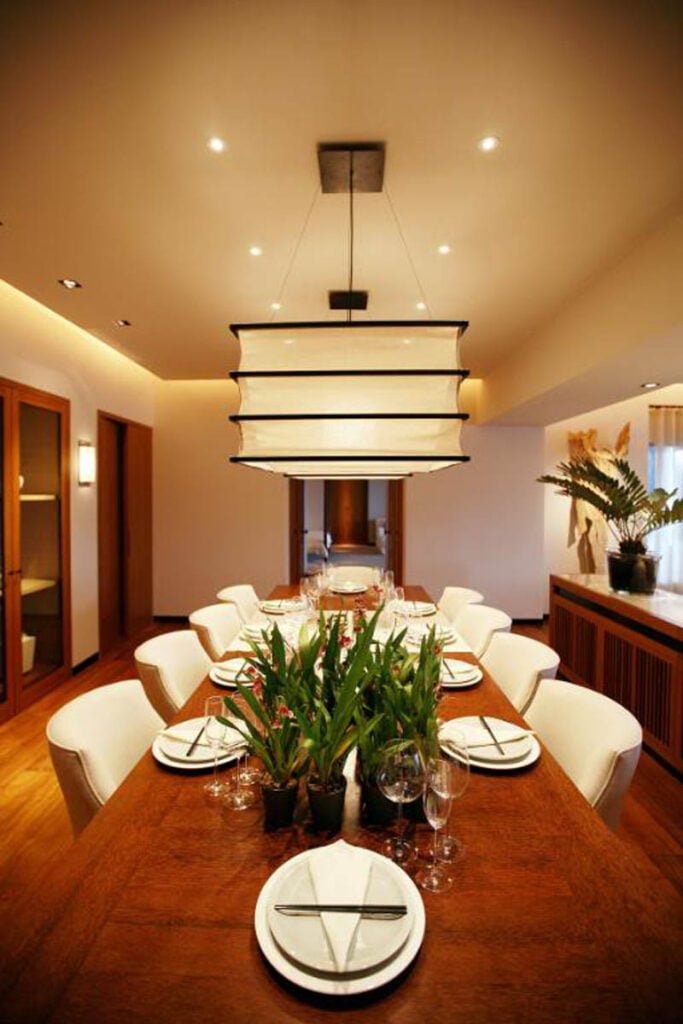
Centerpiece Lighting
Revamp your commercial space’s corridors or walking areas with centerpiece lighting. The goal here is to focus the illumination on the central part of the area, with fixtures arranged accordingly. You have a plethora of options to choose from, including circular LED lights, semi-flush mounts, or pot lights. Depending on your interior design, you might opt for designer panel lights or even grand chandeliers in specific scenarios. However, ensure that your choice seamlessly blends with the surrounding ambiance.
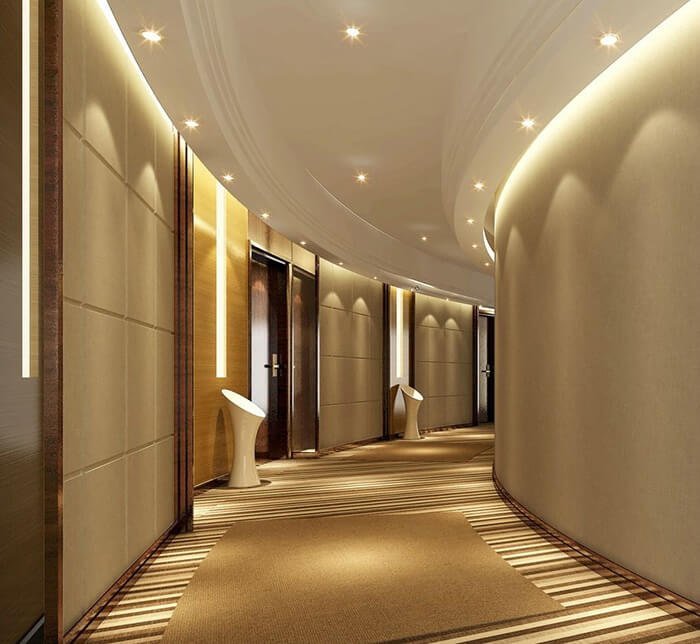
Abstract Geometric Lighting
Are you tired of the uninspiring ceiling lights in commercial settings? Why not experiment with abstract geometric lighting? The LED light design possibilities are limitless, offering a variety of shapes, including circles, ovals, triangles, squares, hexagons, and more. Incorporating these lights in your offices, showrooms, restaurants, or halls can drastically enhance the visual appeal. You might also consider crafting DIY geometric lights with LED strips or neon flex, which can be shaped and sized to your preference, adding a magnificent touch to your space.
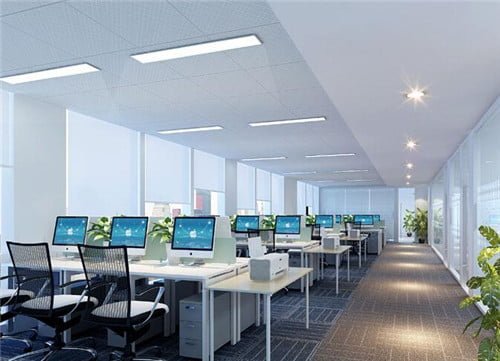
Understated Lighting
Several modern yet minimalist lighting options are available for those who prefer a more subdued approach. While LED tube lights represent the traditional route to minimalistic lighting, adding a contemporary flair with LED strips can be a game-changer. Utilize aluminum channels to suspend these strips, customizing the length to suit your needs. This lighting provides a tasteful touch without overwhelming the space and is ideal for offices, warehouses, garages, or other high-ceiling commercial areas.
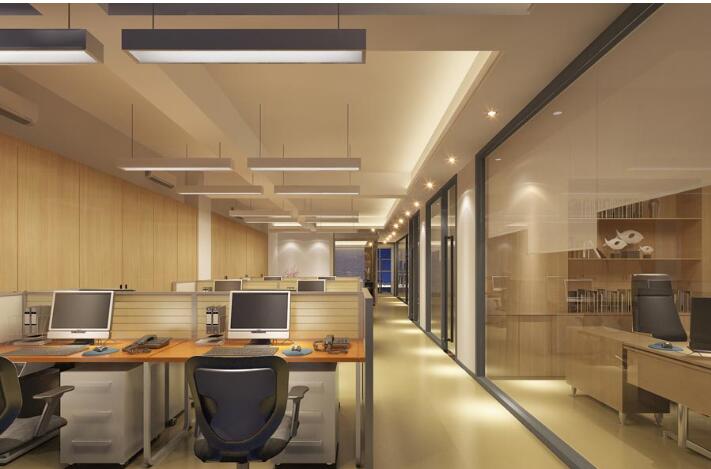
Revolutionary Cove Lighting
Elevate the aesthetic of your commercial space with the contemporary finesse of cove lighting. This innovative lighting method not only imbues your space with a sleek and modern ambiance but also mitigates direct light glares, fostering a serene atmosphere. Constructing a false ceiling and embedding LED strip lights within it can create a subtle yet striking, indirect lighting effect. Suitable for various settings such as offices, hotel lounges, and reception areas, this versatile lighting solution pairs brilliantly with both recessed and LED lighting combinations. For a more vibrant setting, such as automobile showrooms or bars, consider opting for LED neon flex, a lively alternative that adds a dynamic flair to your environment.
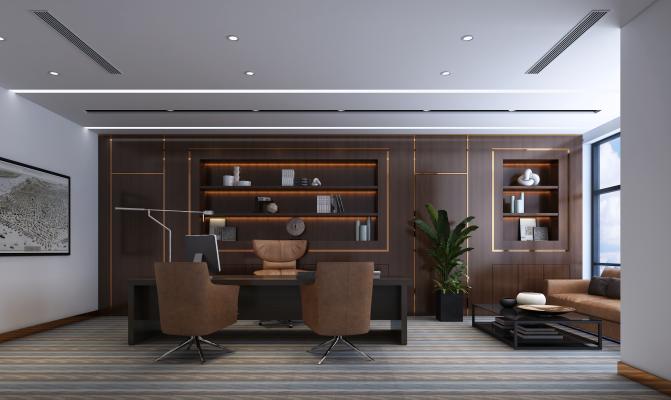
Dynamic Logo Lighting
Establish a commanding presence in any commercial space with striking logo lighting. Whether accentuating your office name or highlighting a restaurant logo, lighting plays a pivotal role in brand representation. Although traditional glass neon lights have been the go-to for years, LED neon signage presents a cost-effective and efficient alternative. Craft distinct and captivating business logos with the help of LED neon flex, a flexible material that facilitates shaping into various forms to embody your brand’s essence perfectly.

Conclusive Thoughts
Selecting the optimal lighting for your commercial space necessitates thoughtful consideration of your needs, as lighting requirements vary significantly between a hospital and a restaurant. Start by determining the necessary lumen ratings, suitable fixtures, the ideal number of bulbs, and appropriate color temperatures. Additionally, assess the environment of your space to ascertain the requisite IP and IK ratings.
In your quest for the ideal lighting fixtures, you will encounter many options, ranging from spotlights and tube lights to neon lights. If your plans lean towards LED strips or neon lights, MyLikeLed is your premier choice. Offering lab-tested products optimized for commercial utilization, we can be your trusted partner in illuminating various spaces like offices, salons, or retail stores. Choose our neon flex lights for a vibrant display of your brand logo. Get in touch with us to revolutionize the lighting ambiance in your commercial space.
FAQs
Commercial lighting is usually brighter, more durable, and designed to cover larger spaces. It also focuses more on energy efficiency and compliance with safety standards, while residential lighting focuses more on style and comfort.
The most common types include LED panel lights, linear fixtures, high bay lights, troffers, downlights, and track lighting—each suited for specific commercial needs like warehouses, offices, or retail stores.
LED lighting is energy-efficient, long-lasting, and requires low maintenance. It also offers better light quality and reduces electricity bills, making it a smart choice for commercial settings.
To choose the right lighting, consider your space type, ceiling height, brightness level (lumens), color temperature, and energy usage. Tailor the lighting solution to enhance both visibility and customer experience.
Color temperature impacts the mood and functionality of a space. Cool white light (4000K–5000K) is ideal for workspaces to improve focus, while warm light (2700K–3000K) creates a relaxed atmosphere in places like restaurants or lobbies.
Yes, smart lighting helps with automation, energy saving, and remote control. It allows businesses to adjust brightness, set schedules, and monitor usage through apps or systems, increasing both efficiency and comfort.

Hi, I’m Xylia Xiong, a sales professional with 14 years of experience in the LED strip light industry. I specialize in providing tailored solutions, leveraging my expertise in LED products and the latest industry trends. Known for effective communication and problem-solving, I’m dedicated to helping lighting manufacturers, importers, and distributors achieve their goals.
Let’s work together to create customized solutions that exceed expectations.
Related Posts

The Best LED Strip Lights You Can Buy Right Now

Comparing WS2811 Vs WS2812B: Key Differences


